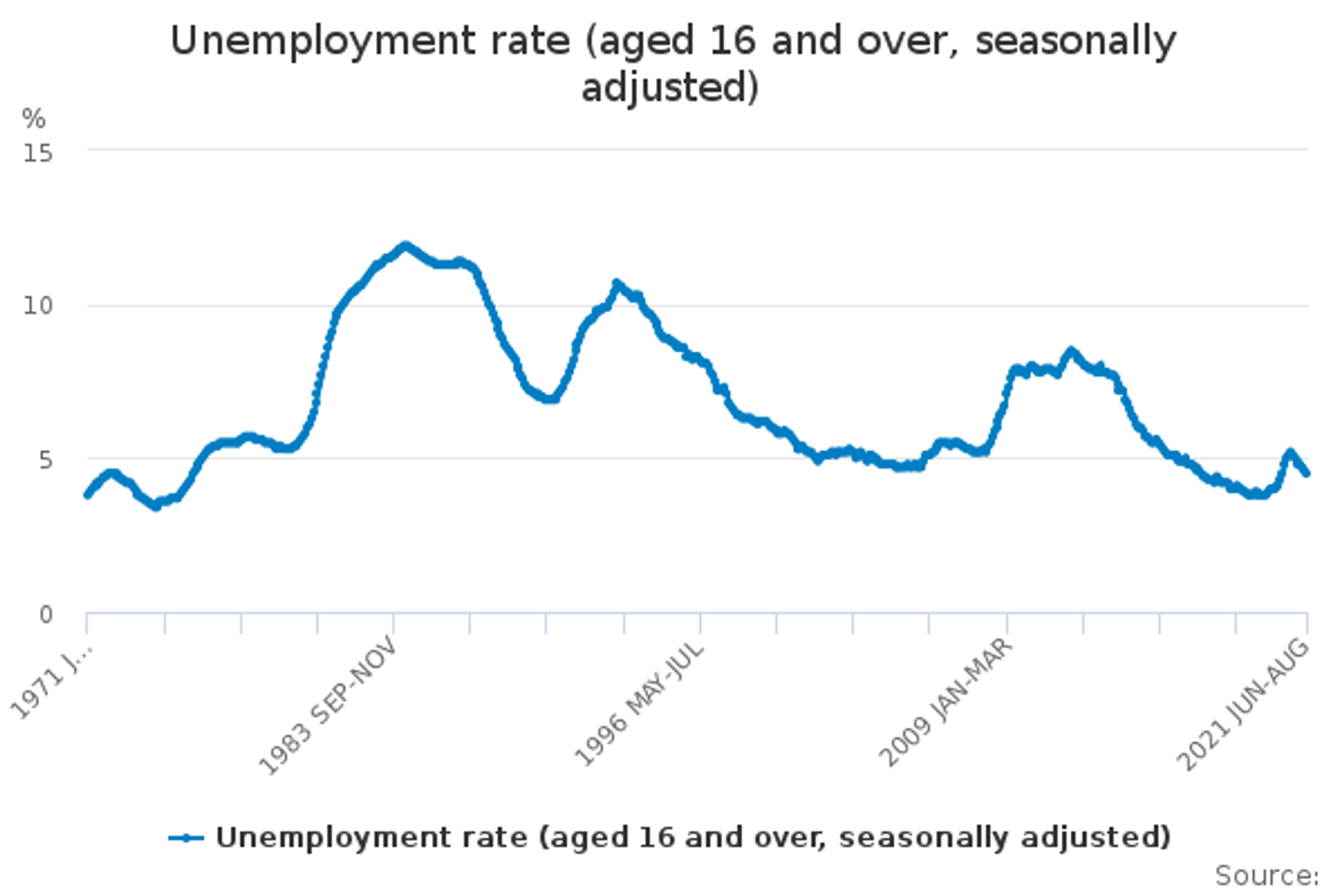More Brits Working Than Before Pandemic — With a Million Vacancies Still Open
19:45 GMT 12.10.2021 (Updated: 20:40 GMT 12.10.2021)

© REUTERS / TOBY MELVILLE / Conservative Party Conference in Manchester
Subscribe
The ending of the treasury's 'furlough' scheme a fortnight ago for workers made redundant by COVID-19 lockdown restrictions raised fears of a sharp rise in unemployment. But figures for the summer period showed more people in work than ever before.
More people are working in the UK than before the COVID-19 lockdowns — with more than a million jobs still up for grabs.
The Office for National Statistics (ONS) data painted a rosy picture of the post-pandemic recovery, and was welcomed by Chancellor of the Exchequer Rishi Sunak.
Seasonally-adjusted inflation was running at 4.5 percent in the quarter from June to August, with three-quarters of adults ages 16 to 64 working. That was just 0.7 percent higher than the 3.8 percent in the last three months of 2019 — the lowest rate since the 1970s — before the mutant coronavirus reached the UK.
Gross domestic product was up by 5.5 percent over the same period in 2020 and salaries were also rising, although inflation had risen by almost a percentage point in a month to three percent.
And the number of jobs on offer increased by 318,000, to 1.1 million, with 50,000 of those in the hospitality sector that was hardest hit by the lockdowns. The number of employees on payrolls rose some 207,000 from August to September to a record level of about 29.2 million.
"The jobs market has continued to recover from the effects of the coronavirus, with the number of employees on payroll in September now well exceeding pre-pandemic levels," ONS director of economic statistics Darren Morgan said.
"The latest earnings continue to show growth on the year, even after taking inflation into account," the statistician added. "However, the figures are still being affected by special factors that make it hard to read underlying trends".

Office for National Statistics (ONS) data shows UK unemployment rates since 1971
Sunak said it was "encouraging" to see unemployment falling after the end of the pandemic furlough scheme on September 30, claiming vindication for the government's Plan For Jobs.
"The number of expected redundancies remained very low in September, there are more employees on payrolls than ever before and the unemployment rate has fallen for eight months in a row," the chancellor claimed.
"We remain committed to helping people find great work, with an extra £500m to support hundreds of thousands back into employment and help the lowest paid to progress in their careers," he added.
The opposition's Labour shadow work and pensions secretary, Jonathan Reynolds, however, poured cold water on the optimistic figures, noting that half a million people had been "away from the workplace" for at least a year.
UNEMPLOYMENT: It’s good that people are returning to the workforce but long-term unemployment remains worryingly high
— Jonathan Reynolds (@jreynoldsMP) October 12, 2021
Govt took nearly 18 mths to set up their plan to tackle this. In the meantime, nearly half a million people have been away from the workforce for a year or more
Reynold's turned Sunak's own rationale for departing from the "triple lock" link between state pensions, wages and inflation last month against him.
Just a few weeks ago, the Secretary of State told us that the “distorted reflection of earnings growth” was justification for the Govt scrapping the triple lock and breaking yet another manifesto pledgehttps://t.co/ksCAfI4dul
— Jonathan Reynolds (@jreynoldsMP) October 12, 2021


